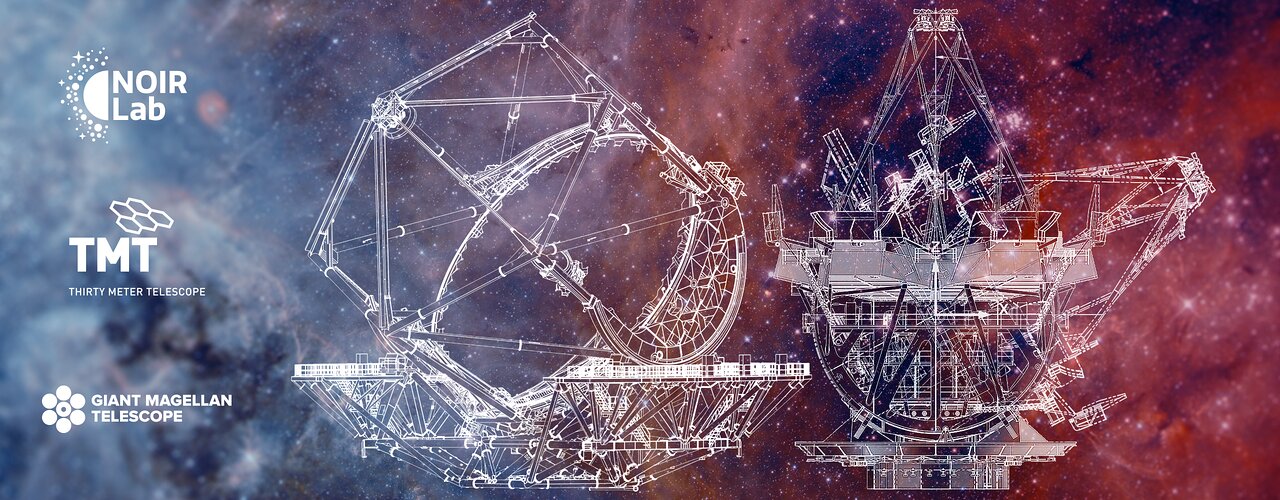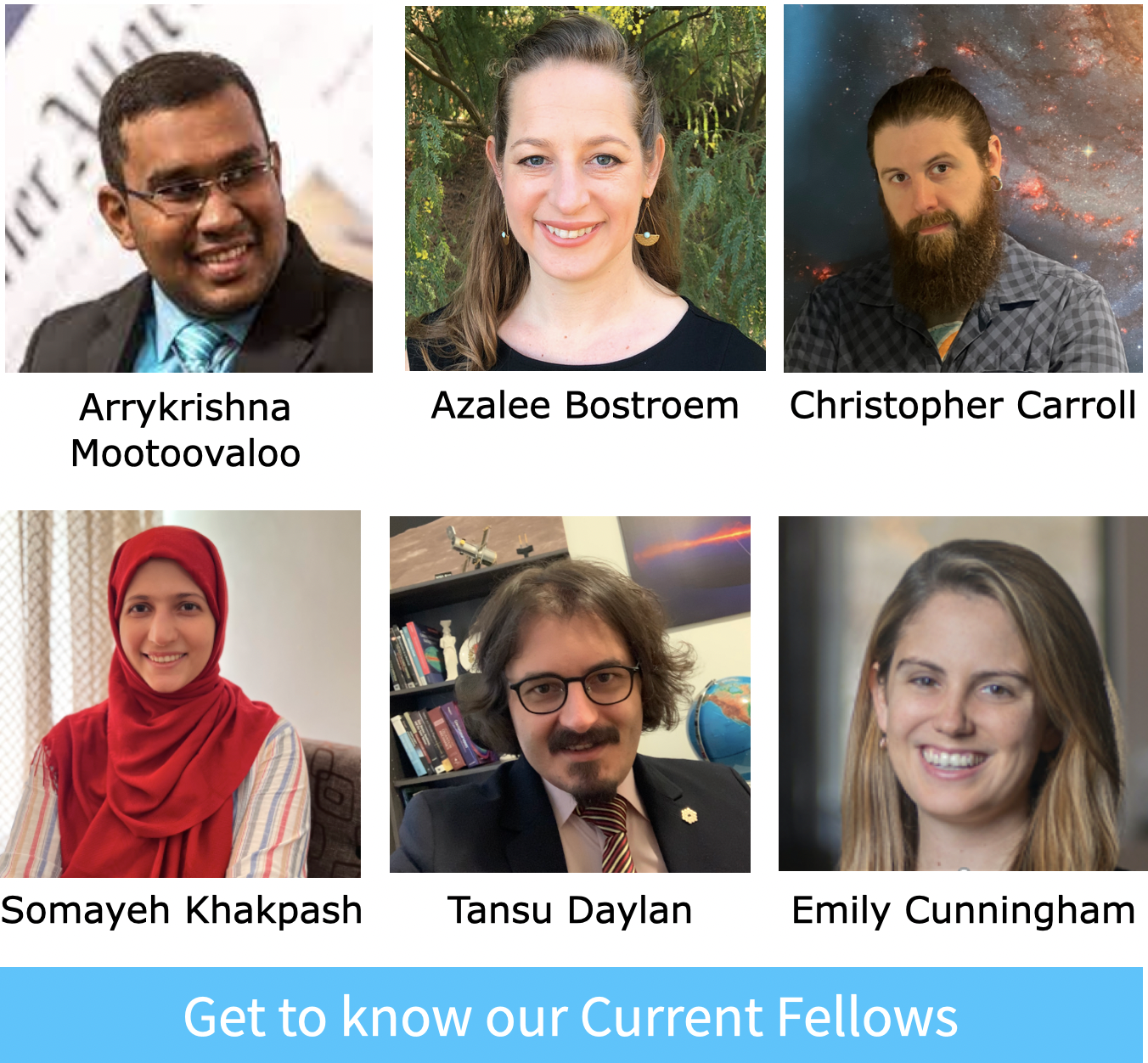NSF NOIRLab @ National Society of Black Physicists Conference 2022
Not the site you were expecting?
You may find what you are looking for in the list of NOIRLab's earlier exhibitions. Also, you may have a look at the official NSBP 2022 Conference website!

Looking for opportunities at NSF NOIRLab?Job listing
La Serena School For Data ScienceThe La Serena School for Data Science (LSSDS) is an intensive 10-day program of interdisciplinary lectures focused on applied tools for handling big astronomical data. Participants will be instructed in how astronomical data are processed, accessed and analyzed, including reduction pipelines, databases, and scientific programming. In addition, working with data from other disciplines, such as bioinformatics, is also introduced. The School is expected to be in-person for 2023 and will be taught by an international and interdisciplinary group of professors who will use real data and examples. Participants will work on team-based projects and be provided training and access to the National Laboratory for High Performance Computing located at the University of Chile's Center for Mathematical Modeling. The school is open to undergraduates and early-career graduate students. Applications for the 2023 August school will be accepted in February - April 2023. Check the webpage for upcoming details: http://lssds.aura-astronomy.org/winter_school/. 
NSF NOIRLab is very enthusiastic about joining the NSBP 2022 conference in person! You can find us at our booth for the whole duration of the conference. We are happy to answer any of your questions, and we have some nice handouts to give away. Come before we run out!
Here is a map to remember where we are! NOIRLab is the whole package, from proposal to data collection and analysis and then dissemination of results to a broad community. Through our facilities — the International Gemini Observatory, operations of Vera C. Rubin Observatory, the Mid-scale Observatories (Cerro Tololo Inter-American Observatory [CTIO] and Kitt Peak National Observatory [KPNO]) and the Community Science and Data Center (CSDC) — we enable breakthrough discoveries in astrophysics for a diverse and inclusive community. We are privileged to conduct astronomical research on Iolkam Du’ag (Kitt Peak) in Arizona, on Maunakea in Hawaiʻi, and on Cerro Tololo and Cerro Pachón in Chile. We recognize and acknowledge the very significant cultural role and reverence that these sites have to the Tohono O'odham Nation, to the Native Hawaiian community, and to the local communities in Chile, respectively.
The first goal of the Vera C. Rubin Observatory is to conduct the 10-year Legacy Survey of Space and Time (LSST). LSST will deliver a 500-petabyte set of images and data products that will address some of the most pressing questions about the structure and evolution of the universe and the objects in it. Rubin Observatory’s mission is to produce an unprecedented astronomical data set for studies of the deep and dynamic universe, make the data widely accessible to a diverse community of scientists, and engage the public to explore the Universe with us. Construction of the Vera C. Rubin Observatory is steadily approaching completion with operations set to begin in 2024. The effort to build Rubin Observatory is a partnership between public and private organizations, which is actively being supported and developed by hundreds of astronomers, physicists, and engineers spanning the globe. Interested in preparing for Early Science?In 2021, Rubin Observatory began Data Preview 0 (DP0), the first of three data previews during the period leading up to the start of Rubin Operations. DP0 makes simulated LSST-like data products available in the Rubin Science Platform (RSP) to a limited number of scientists and students (“DP0 delegates”). The goals of DP0 are to serve as an early integration test of the LSST science pipelines and the RSP, and to enable the community to prepare for early science with LSST. If you're interested in participating in DP0 as a delegate, please come and talk to us at the booth in the exhibit hall! We look forward to hearing about your plans for LSST-related science and helping you prepare for it.

The US Extremely Large Telescope Program (US-ELTP) is an endeavor to develop a two-telescope, two-hemisphere single system for the next generation of ground-based telescopes. This nationally funded Program is a collaboration between NSF NOIRLab and the organizations building the Giant Magellan Telescope (GMT) and the Thirty Meter Telescope (TMT) and was ranked the highest ground-based priority for the 2020s decade in the United States. Scientists at US institutions will have equal opportunity to access 25% of the observing time on GMT and TMT to observe objects anywhere in the sky and carry out transformational research. NOIRLab will facilitate an open peer-review process, archive all science data from both observatories, and provide an extensive suite of user support and data analysis services.
The International Gemini Observatory consists of twin 8.1-meter diameter optical/infrared telescopes located on two of the best observing sites on the planet. From their locations on Maunakea in Hawai‘i and Cerro Pachón in Chile, Gemini Observatory's telescopes can together observe the entire sky. In support of the worldwide Gemini Partnership, the Gemini telescopes deploy a mix of facility-class infrared and visual-wavelength instruments, with more novel capabilities supplied by its visiting instrument program. Their agile operational model provides astronomers with many different timescales for proposing and executing observations and will be particularly important for following up the discoveries to come from the Rubin Observatory LSST. Under Gemini's motto "Exploring the Universe, Sharing its Wonders", the observatory pairs its ground-breaking astronomy with powerful educational programs such as Journey Through the Universe.
NOIRLab's Community Science & Data Center (CSDC) facilitates and supports community open access to telescopes operated by MSO, Gemini, and other organizations across the US ground-based optical and infrared system. The CSDC also provides software systems, user services, and development initiatives to connect and support the scientific missions of Gemini, MSO-CTIO, MSO-KPNO, and Vera C. Rubin Observatory.
Exhibit Resources and Handouts
|
Updated on January 13, 2025, 4:04 pm















